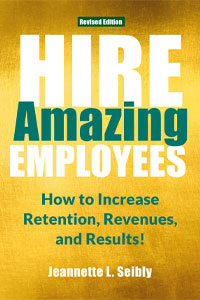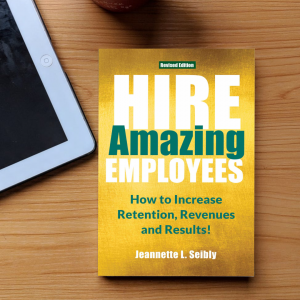
Many leaders and bosses fear failure. Why? They want to look good in the eyes of their team, boss, and customers and be well-liked. The problem is that when leaders fear failure, they can become locked in a myopic point-of-view of what can be accomplished and how it should be done. This limits their successes and opportunities. Another result of being fearful is that team members and customers leave.
How to Attract New Career Success and Opportunities
Rock the Boat. Rocking the boat doesn’t mean someone or something has to go overboard! Instead, it means stretching outside your everyday thinking and including your team during this process. It strengthens everyone’s ability to brainstorm, use critical thinking, and disrupt the common limitations that hurt results. The key is to rock the boat without negatively impacting others.
When You Make a Mistake, Own it. What did you learn? Use “What Worked? / What Didn’t Work?” individually and with the team to develop clarity. Then, share with your boss and customer.
Apologize. This reduces defensiveness when a mistake has been made. Remember, you must address the “elephant in the room” before you can have a straight conversation and make a positive difference. For example, “I’m sorry this project went over budget. Here are the facts about why it happened and what I/we learned.”
Be Proactive, Not Reactive. Mistakes and failures are often avoidable when you are “present” in conversations. Learn to listen with an open mind. Then, ask questions for clarification about the impact new ideas could have on systems, people, and the bottom line. Be a guide for your team to be resourceful, resilient, and flexible when addressing change.
Hire the Right Team. You cannot achieve success alone. Let me repeat that you cannot achieve success alone. And hiring the wrong person for your team is the fastest way to fail! So instead, hire the right team the first time by using a qualified job fit assessment as 1/3 of your selection process. Included will be a coaching guide to develop your team and you and show you how to improve results now and in the future.
Uncover Your Blind Spots. Every leader and team has them. Your ability to recognize and work through them makes the difference between success, so-so results, or failure. Use a qualified job fit assessment and executive coach to move forward faster and with clarity.
©Jeannette Seibly 2022 All Rights Reserved
 Jeannette Seibly is The Leadership Results Coach. She’s celebrating 30 years as an award-winning international executive consultant, speaker, and coach. Her clients value the listening and positive difference she brings to any conversation. Feel stuck in a sticky situation or in challenging relationships? Want straightforward counsel to blast through it? Contact Jeannette for a confidential discussion. PS: She’s also a two-time Amazon International Best-Selling Author!
Jeannette Seibly is The Leadership Results Coach. She’s celebrating 30 years as an award-winning international executive consultant, speaker, and coach. Her clients value the listening and positive difference she brings to any conversation. Feel stuck in a sticky situation or in challenging relationships? Want straightforward counsel to blast through it? Contact Jeannette for a confidential discussion. PS: She’s also a two-time Amazon International Best-Selling Author!
A note from Jeannette about using failure to grow your career success and opportunities: Many leaders and bosses fear failure. They want to look good and be well-liked. The problem is that they become locked in a myopic point-of-view of what can be accomplished and how it should be done. This fear hurts career growth and opportunities for new projects. Not sure where to begin? Contact me for a confidential conversation.
 Leaders need to stretch themselves beyond their perceived limitations for professional growth. It starts with distinguishing your blind spots: https://bit.ly/BeEffectiveLeader
Leaders need to stretch themselves beyond their perceived limitations for professional growth. It starts with distinguishing your blind spots: https://bit.ly/BeEffectiveLeader


 Are you asking good, job-related interview questions? When hiring new employees or rehiring former ones, ask about their ability to handle mistakes. Why? 90% of new hires fail because they dismiss coaching or advice about how to improve. Get your copy of the newly released,
Are you asking good, job-related interview questions? When hiring new employees or rehiring former ones, ask about their ability to handle mistakes. Why? 90% of new hires fail because they dismiss coaching or advice about how to improve. Get your copy of the newly released, 
 Jeannette Seibly is The Leadership Results Coach. She has been an award-winning international executive and family business management consultant, keynote speaker, and author for over 29 years. Her focus is to guide leaders to make a positive difference. Feel stuck moving your team forward? Want straightforward counsel on how to do it? Let’s chat!
Jeannette Seibly is The Leadership Results Coach. She has been an award-winning international executive and family business management consultant, keynote speaker, and author for over 29 years. Her focus is to guide leaders to make a positive difference. Feel stuck moving your team forward? Want straightforward counsel on how to do it? Let’s chat!  Are you asking the right job interview questions? When hiring new employees, ask about their ability to handle mistakes. Why? 90% of new hires fail because they dismiss coaching or advice about their poor interpersonal skills. Get your copy of the newly released,
Are you asking the right job interview questions? When hiring new employees, ask about their ability to handle mistakes. Why? 90% of new hires fail because they dismiss coaching or advice about their poor interpersonal skills. Get your copy of the newly released, 
 When employees “quietly quit,” it is often due to you quickly hiring on instinct and then slowly firing for poor job skills. It’s time to develop a strategic selection system to improve how and whom you hire! Get your copy of the newly released,
When employees “quietly quit,” it is often due to you quickly hiring on instinct and then slowly firing for poor job skills. It’s time to develop a strategic selection system to improve how and whom you hire! Get your copy of the newly released, 
 Why are employees “quietly quitting?” One of the critical issues is poor job fit for employees! And poor job fit for their bosses who got promoted without the skills to be leaders. It’s time to develop a strategic selection system to improve your hiring results! Get your copy of the newly released,
Why are employees “quietly quitting?” One of the critical issues is poor job fit for employees! And poor job fit for their bosses who got promoted without the skills to be leaders. It’s time to develop a strategic selection system to improve your hiring results! Get your copy of the newly released, 




 Jeannette Seibly is The Leadership Results Coach. She has been an award-winning international executive and family business management consultant, keynote speaker, and author for over 29 years. Her focus is to guide leaders to make a positive difference. Feel stuck moving your team forward? Want straightforward counsel on how to do it? Let’s chat!
Jeannette Seibly is The Leadership Results Coach. She has been an award-winning international executive and family business management consultant, keynote speaker, and author for over 29 years. Her focus is to guide leaders to make a positive difference. Feel stuck moving your team forward? Want straightforward counsel on how to do it? Let’s chat!